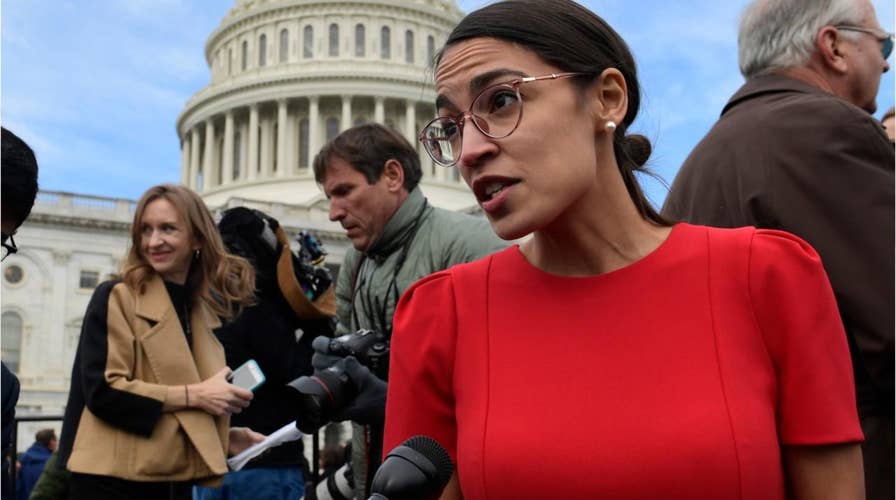U.S. Rep. Alexandria Ocasio-Cortez responded Saturday night after a published report excoriated the freshman congresswoman for pushing her Green New Deal initiative while still traveling on airplanes and using ridesharing services -- instead greener travel methods such as public transportation.
The piece mentioned the New York Democrat’s call in January for more sustainable energy solutions: "The world is going to end in 12 years if we don’t address climate change,” she said at the time.
"But the woman who boasts of a “razor-sharp BS detector” seems to have trouble sniffing out her own,” the New York Post reported. “Since declaring her candidacy in May 2017, Ocasio-Cortez’s campaign heavily relied on those combustible-engine cars — even though a subway station was just 138 feet from her Elmhurst [Queens] campaign office. She listed 1,049 transactions for Uber, Lyft, Juno and other car services, federal filings show. The campaign had 505 Uber expenses alone.”
Instead of embracing cheaper, greener travel methods, Ocasio-Cortez logged 66 airline transactions during her 2018 campaign while only using Amtrak 18 times, according to the Post.
Cortez responded on Twitter, arguing that "living in the world as it is isn't an argument against working towards a better future."
“I also fly & use A/C," Ocasio-Cortez wrote. “The Green New Deal is about putting a LOT of people to work in developing new technologies, building new infrastructure, and getting us to 100% renewable energy.”
CLICK HERE TO GET THE FOX NEWS APP
The Green New Deal is an economic stimulus package designed to address income inequality, health care and climate change. The concept – modeled after President Franklin D. Roosevelt’s New Deal package through public works programs – could be funded through a 70 percent tax on America’s top earners.
Ocasio-Cortez has been a fierce advocate for addressing climate change. She recently questioned whether young couples should have children given the devastating consequences facing Earth unless an unprecedented effort is made to reduce carbon gas emissions by 2030.






















